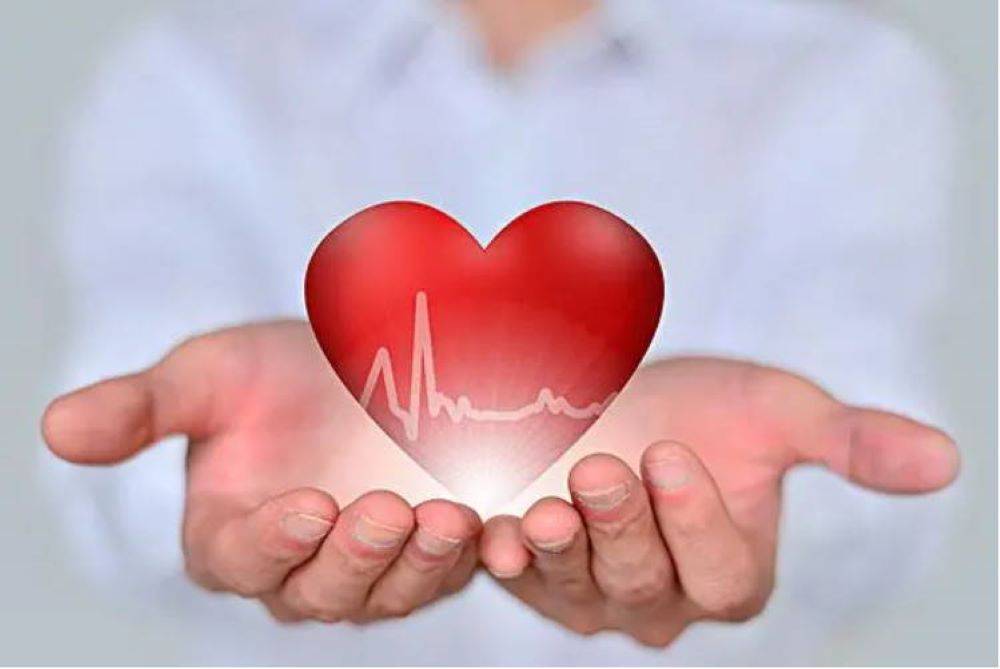High blood pressure is one of the major health problems common in adults, and the vascular system throughout our body is aging. For example, arteries becoming stiff can raise blood pressure. However, high blood pressure doesn't cause many signs of disease that you can see or feel, and many people may not even know they have high blood pressure. Therefore, we need to have a certain understanding of blood pressure and have the awareness of measuring blood pressure regularly.
Introduction:
Atrial fibrillation is a medical condition characterized by very rapid and irregular heart rhythm. It increases the risk of myocardial infarction, stroke, heart failure, and other heart-related serious complications(1).
Our heart has four chambers to pump blood smoothly throughout the body. The upper two chambers are named atria, and the lower two are named ventricles.
All these four chambers contract and relax in an organized way to pump the blood effectively. The upper two chambers receive blood from the body and lungs and pump them to the ventricles. The ventricles, in turn, pump the blood to the body and the lungs.
In atrial fibrillation, the pumping of the upper two chambers isn't synchronized with the lower two chambers.
The upper two chambers beat asynchronously and irregularly, and the normal rhythm of the heartbeat is greatly impaired. As a result, blood doesn't flow normally from the atria to the ventricles, and there's the pooling of blood in heart chambers that can lead to clot formation and stroke(2).
Normal heart rate ranges from 60 to 100 beats per minute. It increases or decreases in response to emotions, stress, physical activities, etc.
In the case of atrial fibrillation, heart rate increases up to 400 beats per minute. As a result, the blood-pumping ability of the heart decreases. If your heart rate is increased severely, you may have atrial fibrillation.
Common symptoms pointing towards atrial fibrillation:
Atrial fibrillation may be persistent, or it may occur in the form of irregular episodes. In some cases, it's asymptomatic, while it causes disturbing symptoms in others.
Following are the common symptoms experienced in atrial fibrillation:
● The sensation of a fast, irregular, and pounding heartbeat
● Palpitations
● Dizziness
● Chest pain
● Lightheadedness
● Fatigue
● Weakness
● Shortness of breath
● Faintness
● Confusion
● Sweating
● Inability to perform heavy exercise, etc.
Atrial fibrillation may be(3):
● Paroxysmal atrial fibrillation:
Paroxysmal atrial fibrillation occasionally occurs, with episodes that usually last for minutes to hours. Its symptoms typically subside within seven days, but episodes can occur repeatedly. Symptoms may go away on their own in some cases, while specific treatment is required in others.
● Persistent atrial fibrillation:
In this case, symptoms last for more than seven days and don't usually subside on their own. In such cases, cardio-version or medical therapy may be used to restore the normal cardiac rhythm.
● Permanent atrial fibrillation:
In this case, abnormal cardiac rhythm lasts long, and proper medical care is mandatory to normalize the cardiac rhythm and prevent serious complications.
How to diagnose atrial fibrillation?
Atrial fibrillation can lead to life-threatening complications if not managed properly. Following are the techniques used to diagnose atrial fibrillation.
● Checking the pulse rate:
The 1st step in the diagnosis of atrial fibrillation is to count down your pulse rate.
To count down your pulse rate:
You may be asked to sit quietly for about 5 minutes. Don't smoke or take caffeine before taking the reading. It would be best if you weren't stressed as it would affect the reading.
The physician will hold your left hand out with your palm facing upwards and your elbow in a slightly flexed state.
He will place his middle and index finger on your artery and count down your pulse with the help of a stopwatch for about 30 seconds. Then he will multiply the reading by 2 to get the pulse rate.
A heart rate measurement device can also be used for this purpose.
Pulse rate can provide a good indication of atrial fibrillation as in atrial fibrillation, heart rate is increased dramatically. However, to confirm the diagnosis, further evaluation is mandatory.
● Electrocardiogram:
The electrocardiogram is a useful technique to confirm atrial fibrillation(4). An electrocardiogram is recorded with the help of an electrocardiographic machine.
It is a painless procedure that records the heart's electrical activity using specific electrodes. In this procedure, electrodes are connected to your hands, feet, and chest and the electrical activity of your heart is recorded in the form of an electrocardiogram.
In the case of atrial fibrillation, the pattern of ECG will be abnormal and will show increased heart rate.
This procedure is performed in the clinic by an expert. However, a portable ECG recorder may be used to check heart rhythm regularly.
● Transthoracic echocardiogram:
Transthoracic echocardiogram is used to produce detailed images of heart chambers, heart valves, their sizes, and shapes using high-frequency sound waves.
This test also reveals the blood clots and helps determine ejection fraction and the heart's pumping ability.
A transesophageal echocardiogram is also used to assess any abnormality in the structure of the heart that may lead to cardiac arrhythmias. In this procedure, an ultrasound probe is inserted through the oral route into the esophagus, and the clear images of heart chambers are taken to observe any structural abnormality.
● Surveillance monitoring:
Surveillance monitoring involves using a Holter device or implantable cardiac loop recorder to assess the heart's electrical activity during routine activities. It may be prescribed if you have unpredictable episodes of atrial fibrillation.
A Holter device is a portable electrocardiogram and is used to record the electrical activity of the heart over 24 hours away from the doctor's clinic. The data is used to assess the possibility of cardiac arrhythmias.
An implantable loop recorder is a small device usually implanted under the skin and is used to record the electrical patterns of the heart over long times.
● Other tests:
Certain blood tests and chest X-rays can also be used to assess the condition of the heart and lungs.
Conclusion
Atrial fibrillation is a condition due to abnormal contractile activity of the atria. Atria contract at a rate not synchronized with ventricles' contraction, and the heart rate may exceed 400 beats per minute.
As the heart rate increases, cardiac chambers contract before filling thoroughly with blood. As a result, the pumping ability of the heart is significantly depressed.
This medical condition needs proper evaluation and medical assistance as it can lead to heart failure and stroke.
Recording the pulse rate and ECG recordings in fibrillation prove valuable in the diagnosis of atrial fibrillation.
References:
1. Gheini A, Pourya A, Pooria A. Atrial Fibrillation and Ventricular Tachyarrhythmias: Advancements for Better Outcomes. Cardiovasc Hematol Disord Drug Targets. 2020;20(4):249–59.
2. Jagadish PS, Kabra R. Stroke Risk in Atrial Fibrillation: Beyond the CHA(2)DS(2)-VASc Score. Curr Cardiol Rep. 2019 Jul 27;21(9):95.
3. Verma KP, Wong M. Atrial fibrillation. Aust J Gen Pract. 2019 Oct;48(10):694–9.
4. Sposato LA, Cipriano LE, Saposnik G, Ruíz Vargas E, Riccio PM, Hachinski V. Diagnosis of atrial fibrillation after stroke and transient ischaemic attack: a systematic review and meta-analysis. Lancet Neurol. 2015 Apr;14(4):377–87.
5. Nesheiwat Z, Goyal A, Jagtap M. Atrial Fibrillation. StatPearls Publishing; 2021
WRITTEN BY CHECKME
Related Blogs
Recommended Products
Subscribe for special promotions,
healthy knowledge, and more!





